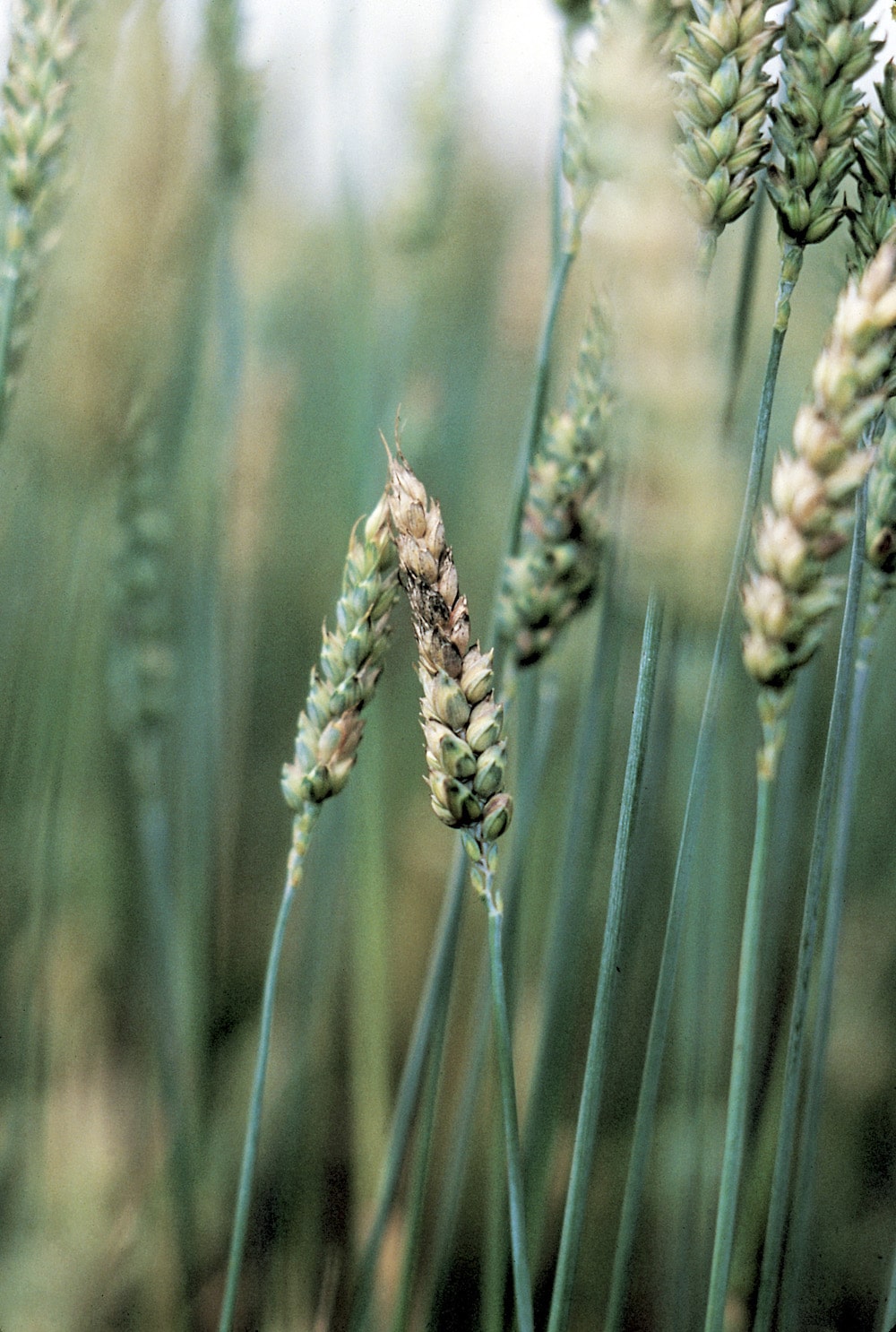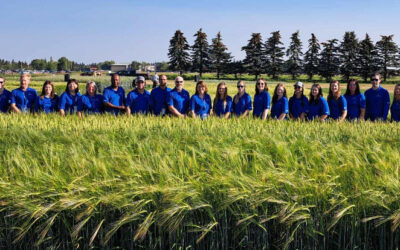Fusarium head blight (FHB) is a fungal disease of cereal crops. When disease infection is severe, FHB can recognized by premature bleaching and salmon-coloured fungal growth on the heads of crops it has infected. FHB reduces yields, decreases grain quality and may limit crop marketing opportunities.
When FHB infects cereal crops, it can produce mycotoxins such as deoxynivalenol (DON), also commonly known as vomitoxin. As most importing countries have strict limits on DON levels, DON limits the grain’s end uses and marketing potential.
To help keep marketing options open and maximize return on investment, Cereals Canada recommends growers use the following practices to manage the disease:
- Grow Disease-Resistant Varieties. Growing the most disease-resistant varieties available in areas at risk for FHB is one of the most important decisions in managing the disease. Cereals also vary in their susceptibility: durum is highly susceptible, barley is less susceptible than wheat and oats are the least susceptible cereal crop.
- Apply Fungicide When There Is an Elevated Risk Of FHB. The risk of fusarium infection increases when hot, humid or wet conditions persist during head emergence and flowering, taking as little as three days for infection to occur. Timely application of a foliar fungicide with a specialized nozzle or nozzle combination for maximum head coverage can help protect crops from FHB at these critical stages. Producers are encouraged to make use of the provincial specific materials available. For example, the provincial agricultural departments have relevant material on their websites, including risk maps; in Saskatchewan, the FHB risk map is produced by and hosted on the SaskWheat website.
- Plan Crop Rotations to Manage Fusarium. Fusarium can overwinter in crop stubble, so planning crop rotations that allow adequate time for residues to decompose before returning to cereal crops is crucial. Rotate away from cereal crops for at least one, and preferably two, years on fields that were recently affected by FHB.
- Plant clean seed and consider a seed treatment in high-risk areas to improve the crop stand.
- Use a Combination of Best Management Practices to Control Fusarium. Using as many best management practices as possible provides the best chance to limit the severity of fusarium outbreaks. Growing disease resistant varieties, applying fungicides and rotating crops may have the highest impact.
Other options include timing crop development to escape the disease, establishing a strong stand by using high quality, vigorous seed and appropriate seeding rates, avoiding irrigating during flowering and managing crop residue by finely chopping and evenly spreading to facilitate the breakdown of disease infectious structures.
By managing FHB in the field, growers are keeping marketing options open for cereal grains.
Source: Keep it Clean!





